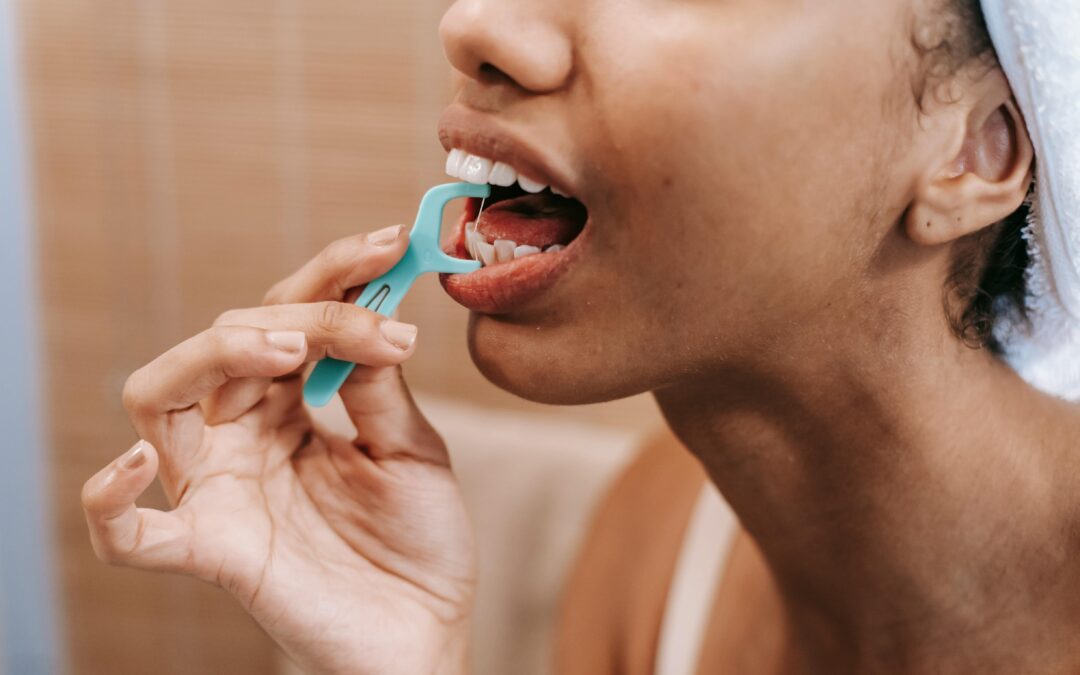The American Dental Association (ADA) advises flossing daily along with brushing twice daily to enhance oral health and decrease the likelihood of developing cavities and gum disease. Flossing helps eliminate plaque from spaces between the teeth that a toothbrush might miss. Research indicates that combining brushing and flossing can more effectively reduce plaque within 1–3 months than brushing alone.
Why Should You Floss Every Day?
Flossing at least once a day is crucial, especially if your teeth are close together or if you’ve had dental work that creates spaces where food can get trapped. Whether it’s after a big meal or as part of your bedtime routine, removing food particles is key to preventing food particle buildup and keeping your gums healthy. Flossing has been associated with a lower prevalence of periodontitis, with flossing 2-4 times a week showing potential benefits similar to more frequent flossing.
Choosing the Right Floss
There are many dental floss types to consider, depending on your needs and preferences. For those who find regular flossing challenging, Glide dental floss might be a good choice because it’s designed to slide more easily between tight teeth. For others, especially if you’ve experienced flossing with recession or bone loss, a Waterpik for oral hygiene might be more effective and less painful than traditional floss.
What’s the Right Way to Floss Your Teeth?
How you floss is just as important as doing it daily. Wrap the floss around your middle fingers and use your thumbs and index fingers to guide it. Make sure to gently form a ‘C’ shape around each tooth to thoroughly clean the space without causing avoiding gum damage while flossing. For those with dental care for tight teeth, ensure you’re gentle to avoid snapping the floss down on your gums, which can cause damage and discomfort. Proper technique can ensure that up to 80% of plaque is removed, significantly reducing the risk of gum disease and tooth decay.
When Should Kids Start Flossing?
It’s good to start flossing for kids early, even before all their permanent teeth come in, to build healthy habits. For very young children with spaced teeth, flossing might not seem necessary, but introducing them to the habit can set a foundation for future oral hygiene techniques.
What Are the Different Types of Floss?
For those with gaps or larger spaces between teeth, expanded dental floss can be very effective as it enlarges and fills the space better than regular floss. If you’re on the go, quick options like sword flossers can be handy, though they might not be as effective at contouring around the tooth and cleaning thoroughly.
When Should You See a Dentist?
If flossing feels tough or you often find food trapped in your teeth, it may be time to check your dental work. Misshapen fillings or crowns can complicate cleaning and, if not corrected, might worsen into decay or gum disease. For residents of Westlake Village, Agoura Hills, or Thousand Oaks, visiting your dentist in Westlake Village can quickly resolve these issues and prevent further complications.
Flossing effectively is crucial for maintaining your oral health. Whether you use standard floss, a Waterpik, or another tool, the goal is to clear away plaque and food bits to protect your teeth and gums. Make sure you’re using the right flossing method to keep your dental health on track. If you’re unsure about your flossing technique or need a check-up, our doors are always open to help enhance your dental routine and safeguard your smile.

